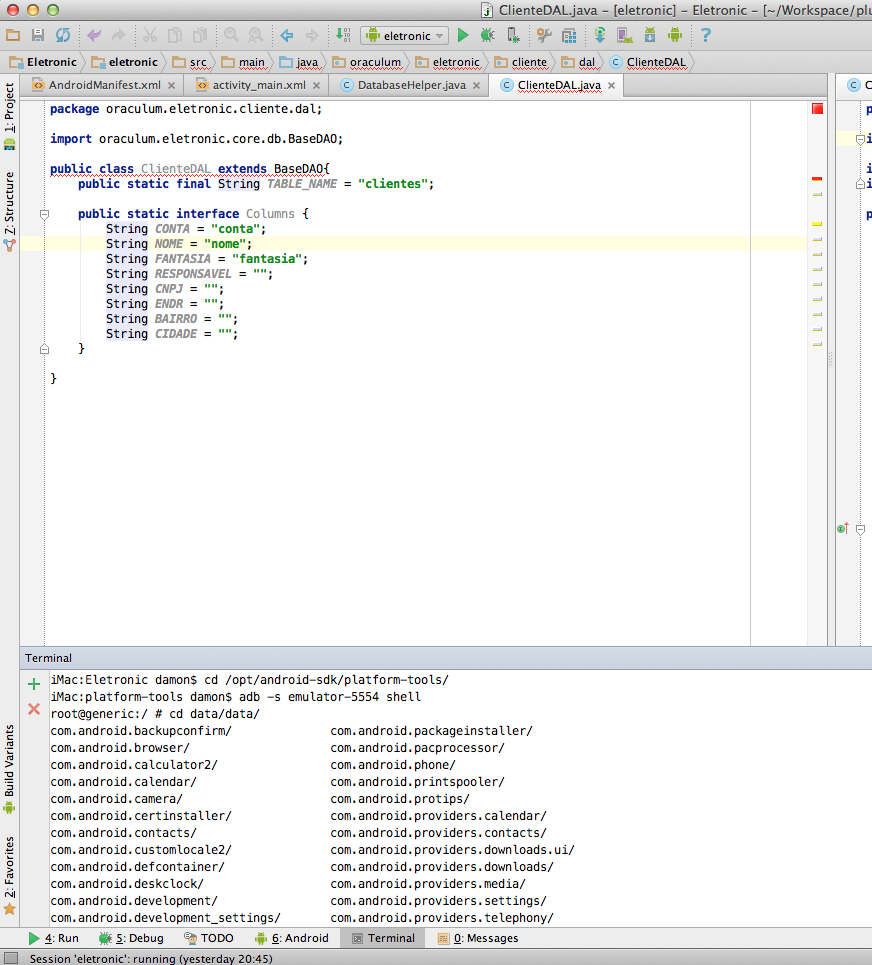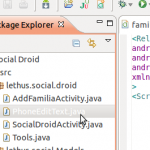1
2
3
4
5
6
7
8
9
10
11
12
13
14
15
16
17
18
19
20
21
22
23
24
25
26
27
28
29
30
31
32
33
34
35
36
37
38
39
40
41
42
43
44
45
46
47
48
49
50
51
52
53
54
55
56
57
58
59
60
61
62
63
64
65
66
67
68
69
70
71
72
73
74
75
76
77
78
79
80
81
82
83
84
85
86
87
88
89
90
91
92
93
94
95
96
97
98
99
100
101
102
103
104
105
106
107
108
109
110
111
112
113
114
115
116
117
118
119
120
121
122
123
124
125
126
127
128
129
130
131
132
133
134
135
| package lethus.socialdroid.core.widgets;
import android.content.Context;
import android.text.Editable;
import android.text.InputType;
import android.text.TextWatcher;
import android.text.method.NumberKeyListener;
import android.util.AttributeSet;
import android.widget.EditText;
public class CpfEditText extends EditText {
private boolean isUpdating;
/*
* Maps the cursor position from phone number to masked number... 12345678912
* => xxx.xxx.xxx-xx
*/
private int positioning[] = { 0, 1, 2, 3, 5, 6, 7, 9, 10, 11, 13, 14 };
public CpfEditText(Context context, AttributeSet attrs, int defStyle) {
super(context, attrs, defStyle);
initialize();
}
public CpfEditText(Context context, AttributeSet attrs) {
super(context, attrs);
initialize();
}
public CpfEditText(Context context) {
super(context);
initialize();
}
public String getCleanText() {
String text = CpfEditText.this.getText().toString();
text.replaceAll("[^0-9]*", "");
return text;
}
private void initialize() {
final int maxNumberLength = 11;
this.setKeyListener(keylistenerNumber);
this.setText(" - ");
this.setSelection(1);
this.addTextChangedListener(new TextWatcher() {
public void afterTextChanged(Editable s) {
String current = s.toString();
/*
* Ok, here is the trick... calling setText below will recurse
* to this function, so we set a flag that we are actually
* updating the text, so we don't need to reprocess it...
*/
if (isUpdating) {
isUpdating = false;
return;
}
/* Strip any non numeric digit from the String... */
String number = current.replaceAll("[^0-9]*", "");
if (number.length() > 11)
number = number.substring(0, 11);
int length = number.length();
/* Pad the number to 10 characters... */
String paddedNumber = padNumber(number, maxNumberLength);
/* Split phone number into parts... */
String part1 = paddedNumber.substring(0, 3);
String part2 = paddedNumber.substring(3, 6);
String part3 = paddedNumber.substring(6, 9);
String part4 = paddedNumber.substring(9, 11);
/* build the masked phone number... */
String cpf = part1 + "." + part2 + "." + part3 + "-" + part4;
/*
* Set the update flag, so the recurring call to
* afterTextChanged won't do nothing...
*/
isUpdating = true;
CpfEditText.this.setText(cpf);
CpfEditText.this.setSelection(positioning[length]);
}
public void beforeTextChanged(CharSequence s, int start, int count,
int after) {
}
public void onTextChanged(CharSequence s, int start, int before,
int count) {
}
});
}
protected String padNumber(String number, int maxLength) {
String padded = new String(number);
for (int i = 0; i < maxLength - number.length(); i++)
padded += " ";
return padded;
}
private final KeylistenerNumber keylistenerNumber = new KeylistenerNumber();
private class KeylistenerNumber extends NumberKeyListener {
public int getInputType() {
return InputType.TYPE_CLASS_NUMBER
| InputType.TYPE_TEXT_FLAG_NO_SUGGESTIONS;
}
@Override
protected char[] getAcceptedChars() {
return new char[] { '0', '1', '2', '3', '4', '5', '6', '7', '8',
'9' };
}
}
} |




